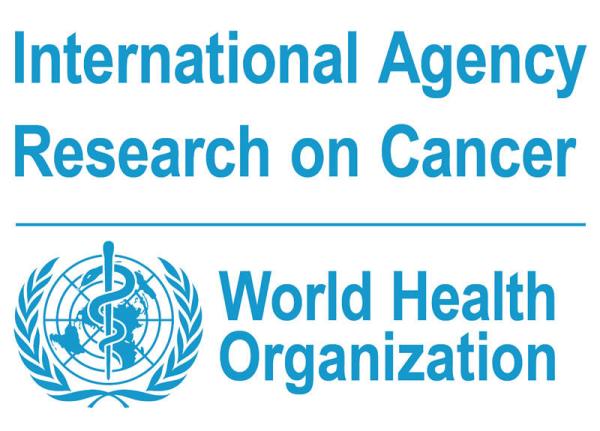
Neil Pearce, a professor at the London School of Hygiene and Tropical Medicine, has risen to the defense of the controversial International Agency for Research on Cancer (IARC), but falling back on hollow claims of IARC's superiority will do little to dispel the serious questions about the Agency's process.
Pearce opens his piece by endorsing last week’s ruling by a California court finding that Monsanto – the maker of the most widely-used herbicide Roundup -- was liable for a rare cancer that developed in a grounds-keeper who had used the herbicide. Roundup contains the chemical glyphosate as its active ingredient. The court decision awarded $289M to the plaintiff.
Pearce proceeds to point out, approvingly, that IARC’s 2015 assessment that glyphosate was a “probable carcinogen” played a prominent role in the court’s decision. One would expect that in what follows he would have delved into the controversy surrounding the question of whether glyphosate is a carcinogen and, thus, whether there is a justification for public concern.
But we get nothing of the sort. Instead, Pearce draws back to refer to “attacks not only on the IARC [glyphosate] decision, but also on some of those involved in the IARC Monograph meeting which made the decision, and on IARC itself. These events are not happening in a vacuum. There have been attacks on previous IARC decisions on potential causes of cancer such as formaldehyde, diesel fumes and radiofrequency electromagnetic field. More ominously, there are moves by some governments to threaten to cut the funding of IARC, in response to these recent ‘inconvenient’ decisions.”
To hear Pearce tell it, any criticism of IARC must be motivated by pro-industry interests. There is no allowance for the possibility that the wide range of respected voices from different disciplines, who have taken issue with IARC’s glyphosate (and other) decisions, could have been made in good faith and could be buttressed by hard facts.
In addition, Pearce – conveniently – ignores the fact that IARC’s assessment of glyphosate stands in sharp contrast to the judgment of virtually every other health and regulatory agency. These have found glyphosate to be safe (both environmentally and occupationally). They include: the U.S. EPA, the European Food Safety Authority (EFSA), WHO-FAO, the German Federal Institute for Risk Assessment (BfR), Health Canada, Australia’s Pesticides and Veterinary Medicines Authority (APVMA), and others. To have pointed out this glaring disagreement with other international and national agencies might have undermined Pearce’s desire to attribute any criticism of IARC to pro-industry vested interests.
Key points in the critiques of IARC’s glyphosate assessment include the following:
1) Unlike virtually all other agencies, IARC engages in HAZARD ASSESSEMENT, rather than RISK ASSESSMENT. This means that IARC considers any scientific evidence of possible carcinogenicity, no matter how difficult to interpret or how irrelevant to actual human exposure. This ignores a corner-stone of toxicology which states that “the dose makes the poison.” It also leads to rampant confusion, since it fails to distinguish between exposures as they occur in the real world and far-fetched and improbable scenarios. But, rather than addressing or remediating this confusion, IARC doubles down on it because it is effective in arousing public concern.
2) The IARC Working Group which reviewed glyphosate distorted the findings of animal studies, ignoring the consistent absence of increased tumors in rats and mice exposed to increasing does of the chemical. Instead, it tortured the data to find evidence of a trend and conclude that the animal evidence provided support for glyphosate’s carcinogenicity. IARC has ignored rigorous re-analyses of the animal data exposing these improprieties.
3) IARC is hyper-alert to conflicts of interest involving industry. However, a key figure in the Agency’s glyphosate assessment has his own glaring conflict-of-interest. In 2014 an American scientist Chris Portier initially proposed that the Agency review glyphosate. He then participated on the glyphosate panel as an outside expert. Then, within weeks of the publication of IARC’s glyphosate judgment in March, 2015, Portier became a litigation consultant for two law firms that were bringing lawsuits against Monsanto on behalf of plaintiffs who claimed that their cancer was caused by the herbicide. This has come out in transcripts of lawsuits against Monsanto.
4) Finally, the IARC working group was aware of the existence of a large, well-designed epidemiologic study, the Agricultural Health Study (AHS) conducted by the National Cancer Institute. In a paper published in 2018 based on this large, high-quality prospective study there was no association of glyphosate exposure with any one of a large number of cancers, including non-Hodgkin's lymphoma (NHL), or with cancer as a whole. The study followed a cohort of 54,251 applicators for about 16-20 years. Over this period, 5,779 participants developed cancers. Owing to its large sample size and its prospective design, this study is far superior to the much smaller and weaker epidemiologic studies that are cited in the IARC review. Additionally, a senior investigator on the AHS, Aaron Blair, chaired the Working Group that evaluated glyphosate. AHS investigators had published results regarding insecticides, fungicides, and fumigants in relation to the risk of NHL in a 2014 publication. However, the results regarding herbicides, including glyphosate, were not included in that paper. IARC did not include the most recent AHS results in its glyphosate deliberations on the grounds that they had not been published at the time of the Working Group deliberations. However, Blair, who was an author on the 2014 paper certainly knew at the time of the Working Group deliberations in 2015 that the results for glyphosate and NHL were completely negative. Furthermore, the AHS was a well-documented study, whose methods were widely known and accepted. Scores of papers using its data had been published. Therefore, the IARC Working Group could have considered the unpublished data in their assessment. Had they done so, this might have had the effect of tempering the conclusion that glyphosate was a “probable carcinogen.” The responsibility would appear to lie with Blair, who kept the updated results to himself. We will never know why the NCI group didn’t publish the updated glyphosate results sooner. But the reasons that have been given publicly are unconvincing.
None of this is worthy of Pearce’s attention. Rather than so much as acknowledge these substantive points, let alone address them, he delivers a blanket, generic, defense of the Agency. IARC, he tells us, is “by far the most authoritative agency in its field.” It is “a beacon of independence and objectivity.” “…there is no other agency which even comes close to IARC in terms of independence, objectivity, and transparency.” He refers to the 120 scientists who signed on to a similarly generic defense of IARC, which touted the Agency’s mission and brushed aside any substantive criticism. Thus, Pearce’s whole argument is based on an appeal to authority and to numbers of signatories. This amounts to a doctrine of IARC’s infallibility.
What is most shocking are Pearce’s lack of intellectual honesty and his poor judgment in thinking that his substance-free “defense” makes a contribution to the controversy over glyphosate. Or that it will dispel the questions looming over IARC. Although he appears unaware of it, Pearce's defense is a glaring symptom of what's wrong with IARC.
Geoffrey Kabat is a cancer epidemiologist and author most recently of Getting Risk Right: Understanding the Science of Elusive Health Risks. Follow him at geokabat@twitter



